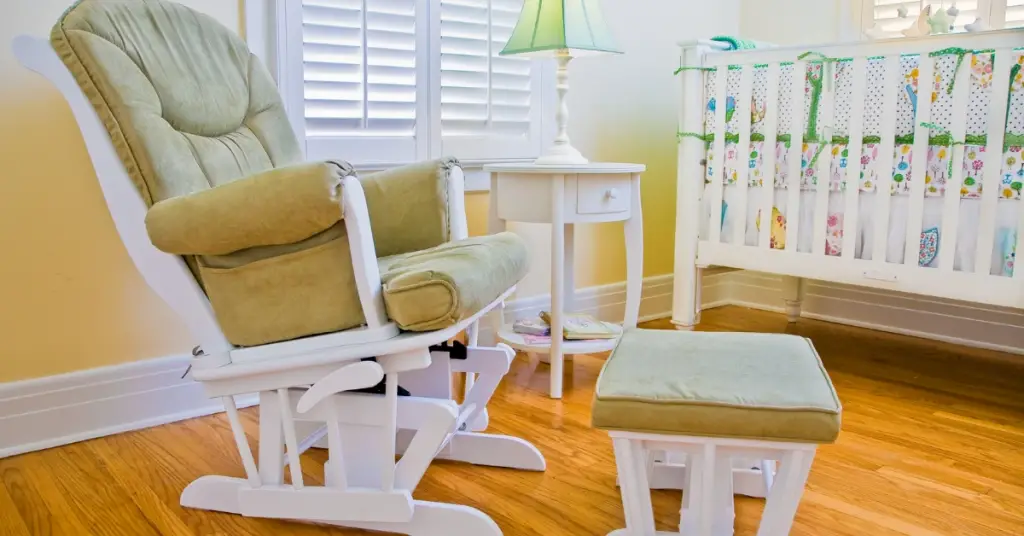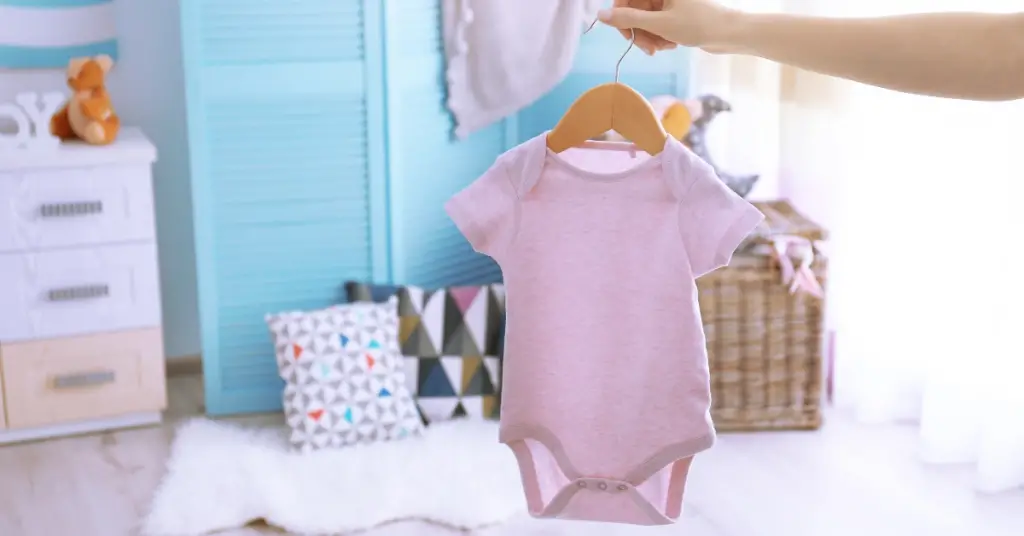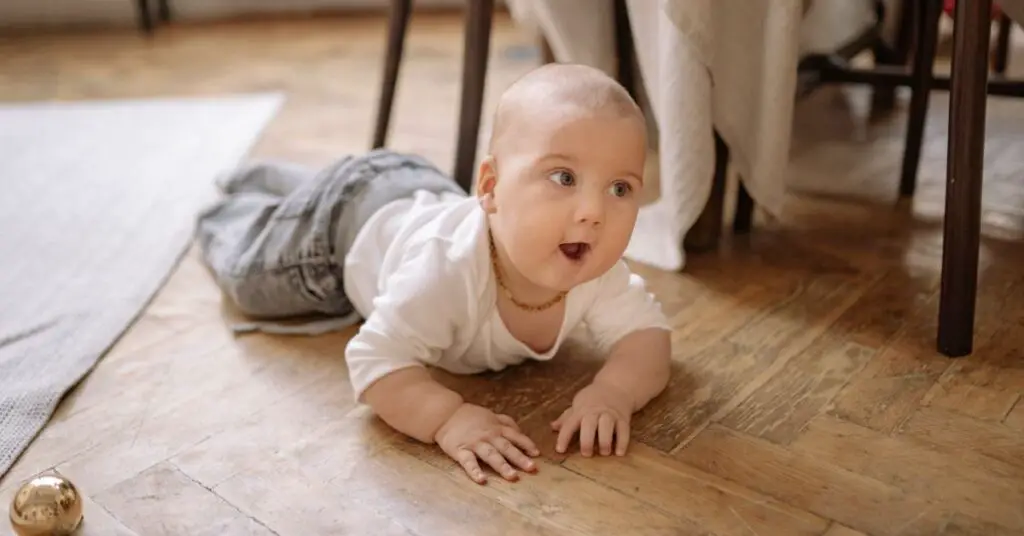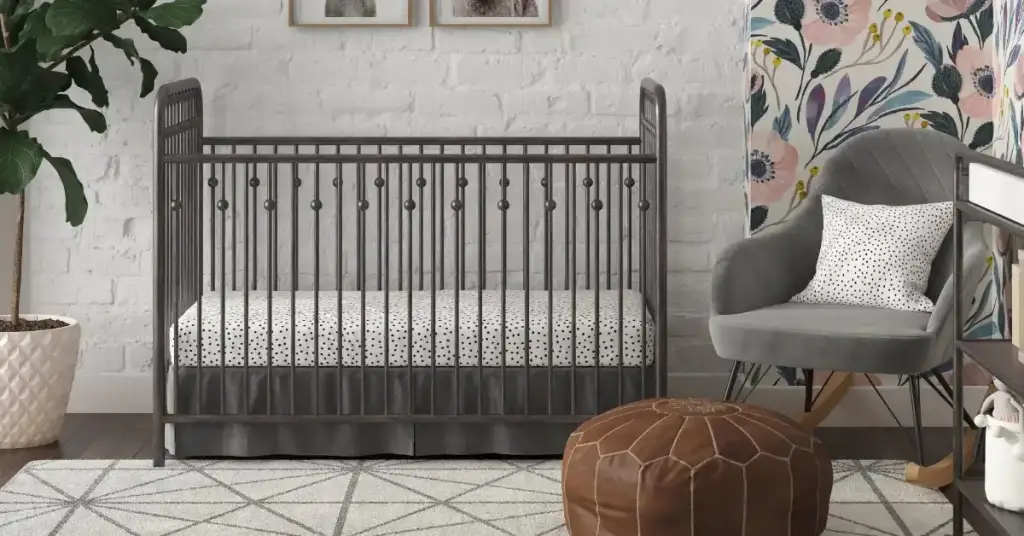Considering cloth diapering? Read this guide to get started on the right track.
The products mentioned on this page were independently selected by Babycious editors. As an Amazon Associate, Babycious may earn a commission from qualifying purchases.
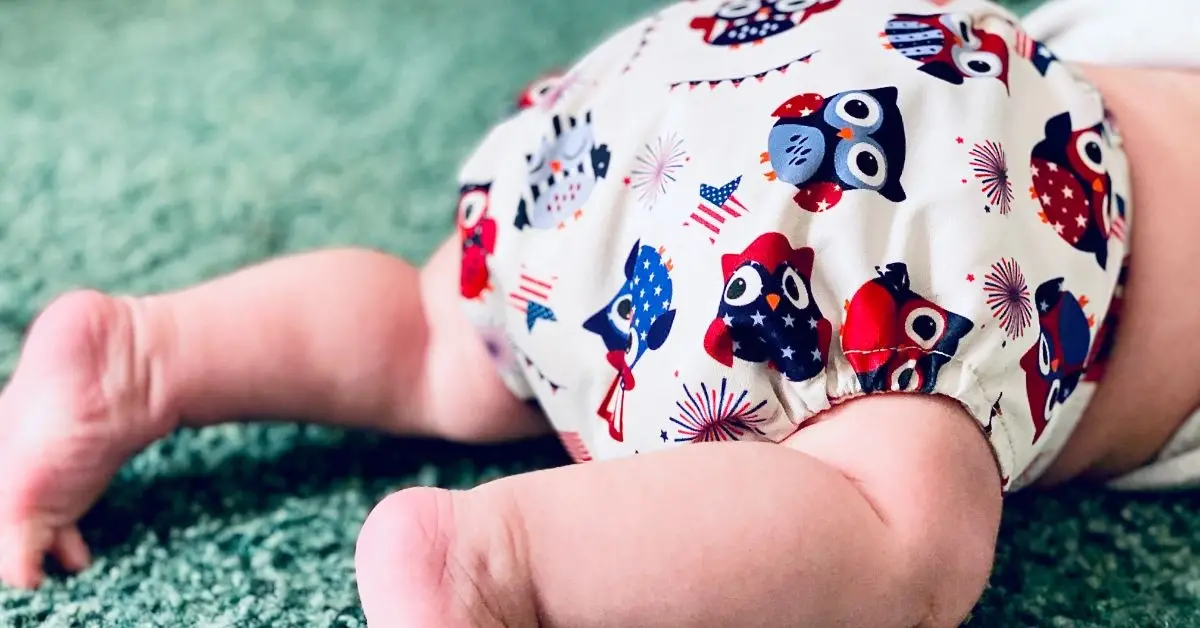
Your baby is coming soon and everyone you know is urging you to stack on disposable diapers? This could be a good idea as babies go through diapers at the speed of light. But before you go down the path of disposables, you might want to know about all your options when it comes to diapering. Here’s a comprehensive guide on everything you need to know to master the cloth diapering game.
Things to Consider Before Cloth Diapering
Let me start by saying that modern cloth diapering has absolutely nothing to do with how your grandma used to cloth diapers. The safety pins and huge handkerchiefs are no longer a requirement. Let’s look at the top things you might look at when considering the switch:
Is Cloth Diapering Better for Your Baby?
Once you start cloth diapering, your baby’s cute bum will thank you as it waves goodbye to the ton of harmful chemicals regular diapers have. The materials that compose cloth diapers are mostly natural, especially those that come in contact with your baby’s skin. Here are the most commonly used ones:
- Cotton – cotton-based fabrics are widely used in making cloth diapers. It’s a natural fabric that’s easy to use, washes and dries nicely, and has medium but fast absorbency. You can choose organic cotton if you want to make sure that no toxic substances were used in production.
- Hemp – typically blended with cotton. Hemp is also a natural fiber and is considered one of the most sustainable crops in the textile industry. Plus, it can hold a lot of liquid. The only cons to it would be that it has a slow absorbency rate and tends to dry slowly. You can overcome this by placing a hemp doubler under a faster absorbing material.
- Bamboo – this is a highly absorbent material. Many parents find it to be softer than cotton or hemp, so you can use it directly on your baby’s skin.
- Polyester – a man-made material, often referred to as microfiber. It is quite absorbent but it does wear out over time. Also, make sure not to put it directly against your baby’s skin.
Because the materials used in cloth diapers have a lot fewer chemicals in them compared to disposables, your baby is less likely to get rashes. If you use highly absorbent liners, you can get even fewer leaks than with disposables. Modern cloth diapers are also more breathable.
Another hidden perk of using cloth diapers is that it makes potty training a lot easier. Since your baby won’t have the same dry feeling disposable diapers provide, she will be more willing to go potty.
Is Cloth Diapering Better for The Environment?
The most obvious thing when cloth diapering is the amount of trash you will generate or actually the lack thereof. 20 billion disposable diapers are thrown every single year in the united states alone. This translates to about 3.5 million tons of waste, which does not degrade well in landfills.
But we’re not giving you these facts to guilt you into cloth diapering! You may argue that cloth diapers require a lot of water and energy both to make them and to use them daily. And that is true! So the choice is really yours even from an environmental point of view.
Does Cloth Diapering Save Money?
On average, the cost of disposable diapers per child is around 2000$. Knowing that you can get a cloth diapering starter pack at around 600$, you can see that it is a pretty good investment. Especially that you can use your pack of cloth diapers with all your kids.
Cloth diapers also have an excellent resale value. This means that if you take care of your diapers pack you’ll be able to retrieve most of your investment money once your diapering journey comes to an end.
Types of Cloth Diapers
Meet the new and improved cloth diapers. With better and lazy-parent-friendly designs, cloth diapering has never been easier. You can now choose from a variety of types and find what works for you.
Let’s look at the most popular options: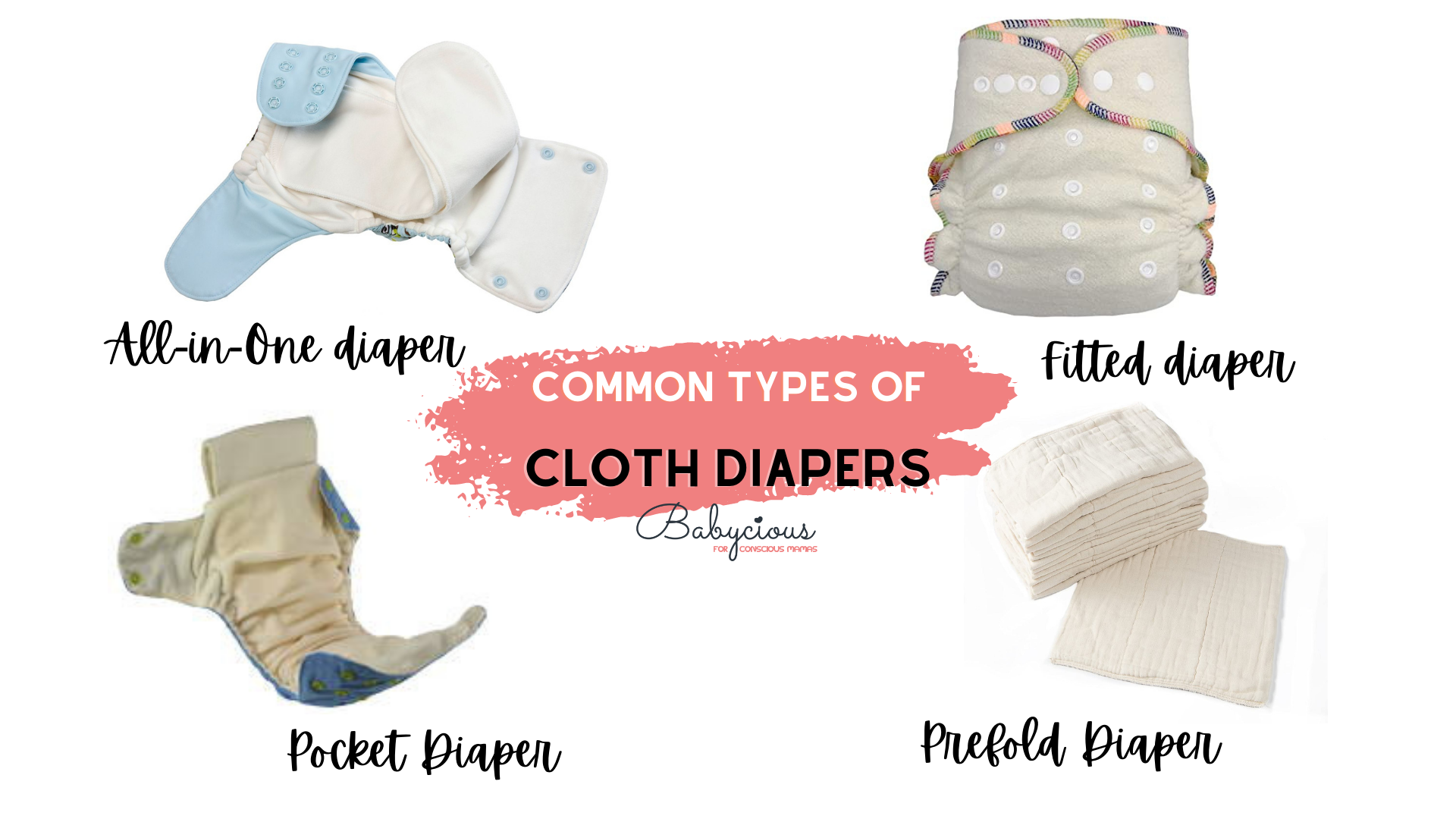
Pocket Diapers
This is a very popular diaper. You can say that it is a revolution in the cloth diapering world. It is composed of a waterproof cover sewn to an inner lining made of “Stay Dry” material. Between these two layers (in the pocket), you can put an absorbent insert that will hold all the liquids in.
With this clever system, you don’t need to worry about folding the diaper and that makes switching from disposables a breeze. Once you stuff the inserts in your pocket diaper, it is basically done. You (or your baby’s caregiver) can use it just like a disposable diaper.
All-In-One (AIO) Diapers
Similarly to the pocket diaper, the all-in-one diaper is very easy to use. It is a one-piece system that has the insert already attached to the waterproof outer cover.
All-in-ones are called the easiest diaper style for a reason. They look like disposables and you can use them just as easily. They make for a very quick change in any situation.
The downside of this very convenient diaper style is that it takes a long time to dry, and it can cost a little bit more compared to other diaper styles.
Fitted Diapers
Fitted cloth diapers are designed (as their name suggests) to fit snugly around your baby and keep all the mess contained. They resemble in size the disposable diapers and for that, they are less bulky than the pocket diapers and the all-in-ones. So this style can be for you if you need an easy-to-use small alternative to disposables.
Fitted diapers usually come in different sizes, so you will need to up your stash as your baby grows out of his fitted diapers. But there are a few brands that provide a one-size style with adjusting snaps.
Flats and Prefolds
Flats and Prefold diapers have been around for years. They are the type that your grandma probably used to cloth diapers. Call them old school, but they are still trusted by many parents even today.
A flat diaper is a piece of absorbent cloth that you can fold into a diaper shape and fasten on your baby using safety pins or other fasteners. You can increase the absorbency by folding it multiple times, and you can get bigger flats as your baby grows bigger. After you secure the diaper around your baby, you’re still going to need a waterproof cover to keep the moisture away from your baby’s clothes.
A prefold is pretty much a flat diaper that has already been folded for you, so it’s one step less that you would have to go through.
Both flats and prefolds are economical. You can get as much of them as you need but they do require more work than the more modern diaper styles. You can also use these diapers as inserts if you’re using pocket diapers. Flats and prefolds come in a variety of fibers and sizes so you are sure to find what works for you.
Getting Started with Cloth Diapering
Now you must be wondering which type of cloth diapers is for you. There are many options you can choose from when you consider cloth diapering. It is easy to be overwhelmed! Our advice is to try out a number of types and brands before you make an investment.
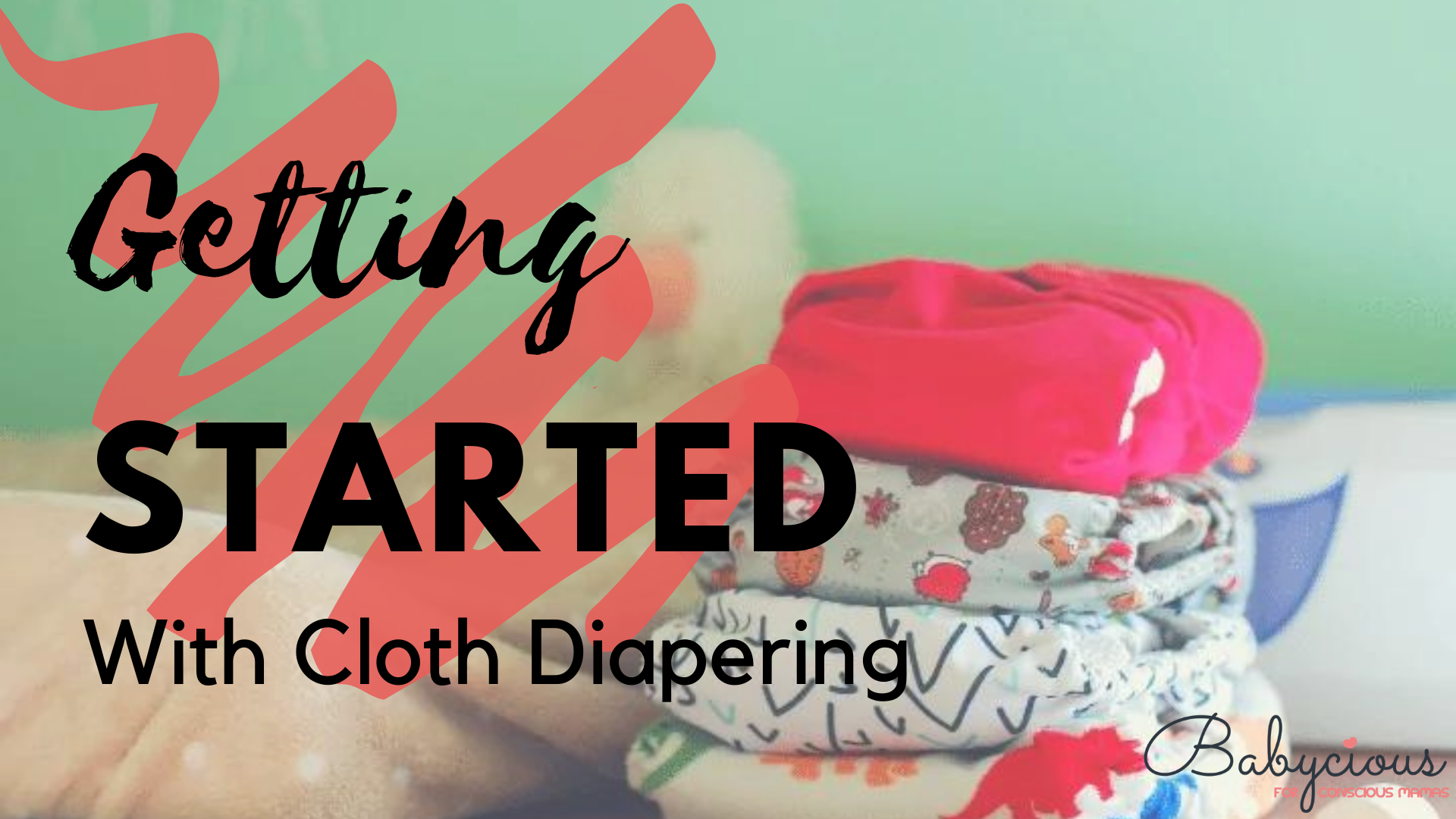
Prepping Your Cloth Diapers Before Use
As you do with any newly bought cloth items, make sure you wash your cloth diapers before you use them.
Some cloth diapers will need to be prepped before use. This is important because the cloth diapers will go on your baby’s most sensitive areas. The cloth diapers have to be clean and also free from any natural plant oils if the diapers are made from natural fibers.
Check the tags on your diapers for washing instructions and for materials they are made of. If your cloth diapers are made of polyester, you just need to wash them once before using them. If they are – or have some parts made of natural fibers such as cotton, hemp, or bamboo, it will take up to 3-5 washes to remove the natural oils from the fiber. Shrinkage after washing and drying is normal, especially with natural fibers, so expect your prepped diapers to be a bit smaller in size.
How Many Diapers Will You Need?
The answer to this depends mostly on how often you’ll be able to do laundry. Ideally, you’ll do a load every 2 to 3 days. So you’ll need a stash of diapers that will last you that long.
The number of daily diaper changes can vary according to your baby’s age range. While newborns can go through 8 to 12 diapers a day, infants require a diaper change 6 to 8 times a day, and toddlers only need their diapers changed 3 to 5 times a day.
Based on the high end of this rough estimation, we recommend you start with 36 diapers if you have a newborn, 24 for an infant, and about 20 for a toddler.
This amount will get you covered for sure, but if you’re just starting out, you may want to get the minimum amount of diapers and then work your way up based on your laundry routine and your baby’s age.
How to Properly Fit a Cloth Diaper
Here is a step-by-step video that shows you how to put on various types of cloth diapers :
Accessories to Make Cloth Diapering Easier
After you have acquired a pack of cloth diapers of your choice, what else do you need to start cloth diapering? Not much really! While some accessories can make the process a lot easier and less messy, they are not necessary by any means.
But if you have some bucks to spare, here are some useful accessories that will greatly improve your cloth diapering experience :
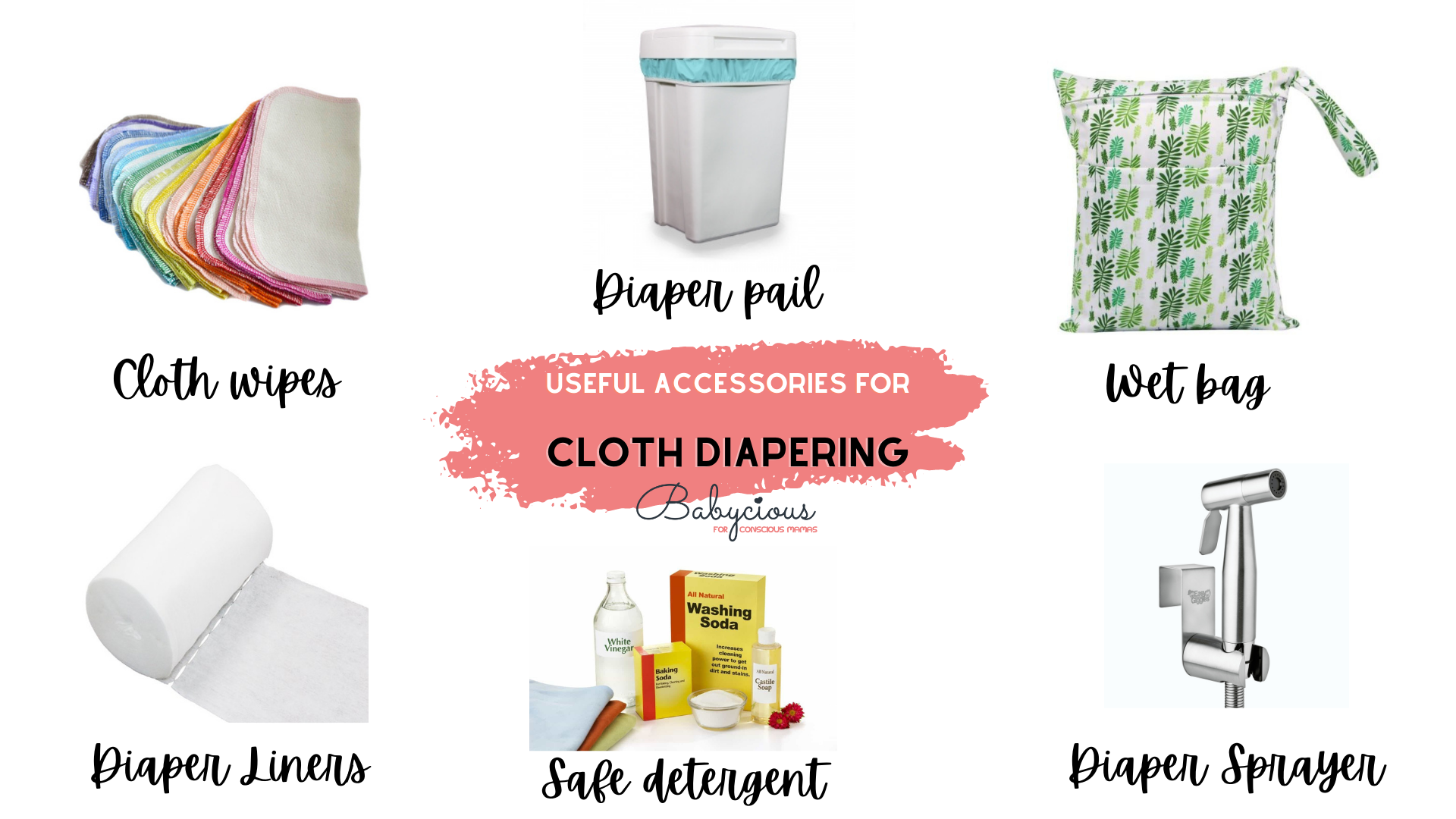
- Cloth wipes – or just normal wipes. If you’re cloth diapering and you will be washing your cloth diapers anyway, why not throw some cloth wipes in the mix. This won’t require any extra effort from you and will save you some $$ on disposable wipes. Plus they have all the advantages that made you consider cloth diapering in the first place!
- Diaper pail – for storing your cloth diapers before laundry. A diaper pail won’t take up much space in your nursery or in your room and will help keep any odors trapped inside especially if you use a deodorizer. You can choose a diaper pail with a step pedal to keep your hands free. Also, it is a good idea to use a diaper pail liner that you will throw into the washing machine along with your soiled cloth diapers.
- Wet bag – another storage option before laundry day. Some parents prefer using a wet bag over a diaper pail. Wet bags come in a variety of sizes and materials. They can also have some features like zippers or drawstrings. You can simply hang it either on a doorknob or on any sturdy surface with a hook.
- Diaper liners – to make cleaning solid waste easier. This is a good option if you are poop-phobic! A diaper liner goes inside your cloth diaper and collects any solid waste while letting the fluids pass through. You can then simply throw away the liner if it is a disposable one. This is a useful accessory as it will also help extend your cloth diapers’ cycle of life.
- Diaper sprayer – for rinsing soiled cloth diapers from poop before washing them. This is a great accessory for cleaning your baby’s soiled diapers without ever touching them. You can attach it to your toilet and use it to spray poo off the cloth diapers directly into the toilet. This is actually a lot easier than it sounds and will save you from dealing with the poop part of cloth diapering.
- Cloth diaper safe detergent – this is not a necessary item to have but it will definitely extend the life expectancy of your cloth diapers. A detergent that is cloth diaper friendly will have a lot fewer toxins/chemicals so it will keep your cloth diapers clean but also free from any build-up of deposits.
How to Store and Wash Cloth Diapers
Properly storing and washing your cloth diapers is what is going to keep them functional for many years to come.
Storing Cloth Diapers Before Laundry
So what to do with a wet diaper?
First of all, remove any inserts.
If your baby is exclusively breastfed, her poop is water-soluble so you can directly store the diaper in the diaper pail or in a wet bag.
If your baby is bottle-fed or has started solids, then it is recommended that you rinse the poo off the diaper before putting it in the washing machine. Using a diaper sprayer makes this step mess-free and proves effective in removing the most stubborn and sticky poo. You can also use diaper liners to collect the poo and flush the whole thing in the toilet if it is a flushable liner.
To store cloth diapers, there are two main methods:
- Dry pail – This is a dry storage solution. Simply put your rinsed cloth diapers in a pail until wash day. Make sure you squeeze your cloth diapers after you rinse them to get rid of any excess water and put them in the pail.
- Wet pail – AKA soaking the cloth diapers. This means that you put your cloth diapers in a bucket full of water and keep them in that pail until wash day. You can add some additives like white vinegar, baking soda, and essential oils to the water to help reduce odors and stains. This solution makes washing the cloth diapers easier because they are already soaked.
How to Wash Cloth Diapers
Once you have your load of cloth diapers, put your cloth diapers in the washing machine. First of all, you’ll want to run a cold cycle to get rid of any solids stuck in the diapers. After that, put some detergent in the washer and run a second cycle using hot water.
You can add some baking soda along with the detergent to get better results. But steer clear of any fabric softeners. These can damage your cloth diapers because of the chemicals and fragrances they usually have.
Before You Go
Cloth diapering is a very smart option for diapering. However, we must warn you that it does require a little bit more work than disposable diapers. But the benefits you and your baby (and the planet!) will get from it makes the extra effort totally worth it. So happy cloth diapering!
The purpose of this article is informative and educational only. It’s not a substitute for medical consultation or medical care. We do not accept any responsibility for any liability, loss, or risk, personal or otherwise, incurred as a consequence, directly or indirectly, from any information or advice contained here. Babycious may earn compensation from affiliate links in this content.
